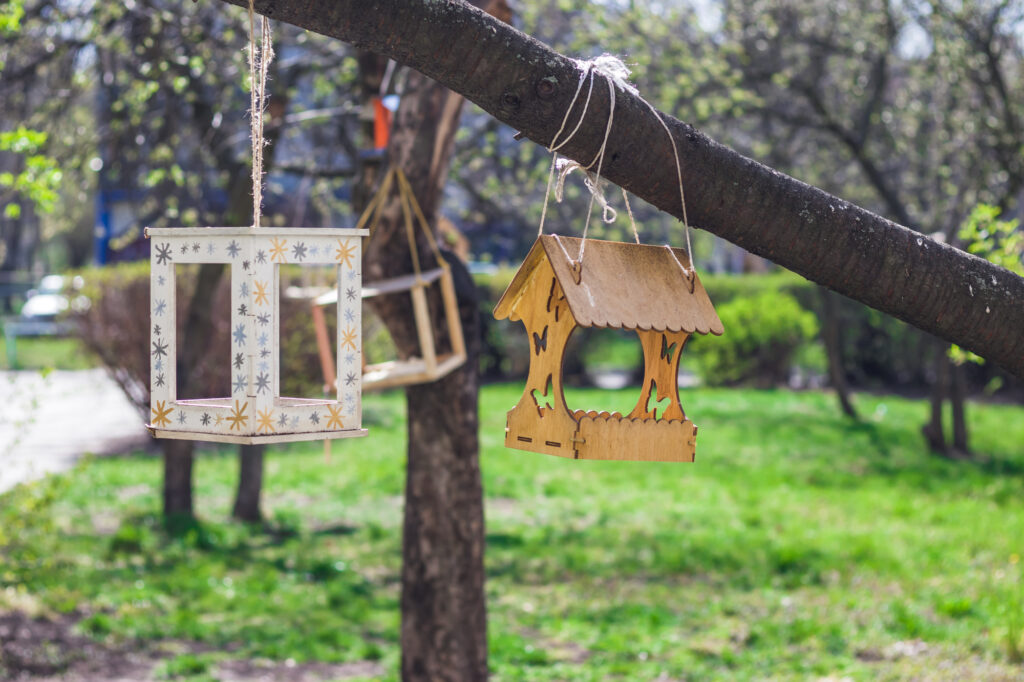The last things you want when choosing a bird feeder are wasted money or anything that scares off your birds. With the help of my beginner birdwatcher list, I’ll make sure you choose a feeder that works for you.
I’ve been birdwatching for years now, and I’ve definitely made a few of these mistakes in the past. When you’re starry-eyed with the hopes of spotting a beautiful and rare bird, you can sometimes get a little impatient!
However, the wrong feeder can easily backfire and make your birding experience worse. Keep reading to avoid common (and slightly less common) mistakes so you can have a great time birdwatching year-round.
I’ll even sprinkle a few beginner-friendly bird feeders throughout so you can quickly get started shopping!
Key Takeaways
- The right perspective is key to choosing a good feeder – instead of looking for ‘perfect’, seek out a feeder that’s ‘compatible with your lifestyle’ or ‘suits a specific bird species’.
- Some of the best materials for outdoor bird feeders are plastic, stainless steel, aluminum, and glass. Wood is pretty and eco-friendly, but requires a lot of upkeep to keep mold or pests at bay.
- Feeder placement, quality of life features, and reading user reviews are essential details to help you choose the best feeder for your hobby.
Holding out Hope for the Perfect Feeder
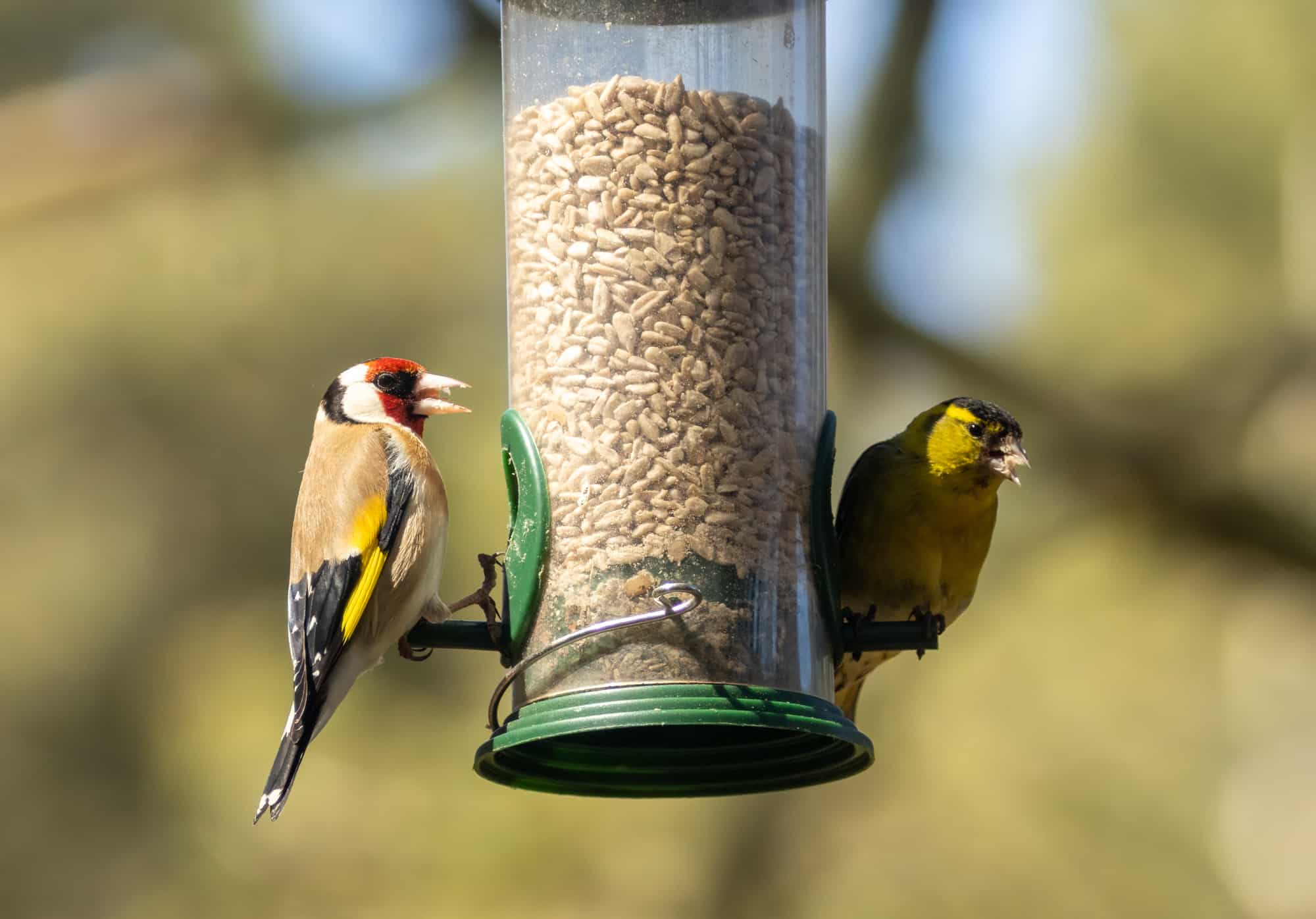
Reasonable expectations are just as powerful a tool as your birdfeed or binoculars. Holding out hope for the perfect feeder will just leave you disappointed (or wasting your money entirely).
One of the most common mistakes when picking a feeder is neglecting your own perspective. Instead of hoping for ‘perfect’, ask yourself the following questions:
- Will my feeder attract the bird species I’m most interested in seeing?
- Will my feeder have high-quality materials that hold up to repeated usage and time?
- Will my feeder match my outdoor furniture?
- Will my feeder be easy for me to clean and refill?
- Will my feeder be within my budget range?
If you find a feeder that only fits a few of these categories, never fear. Sometimes a decent feeder can still be very good for your needs as a birder.
Choosing an Incompatible Size for Your Bird Population
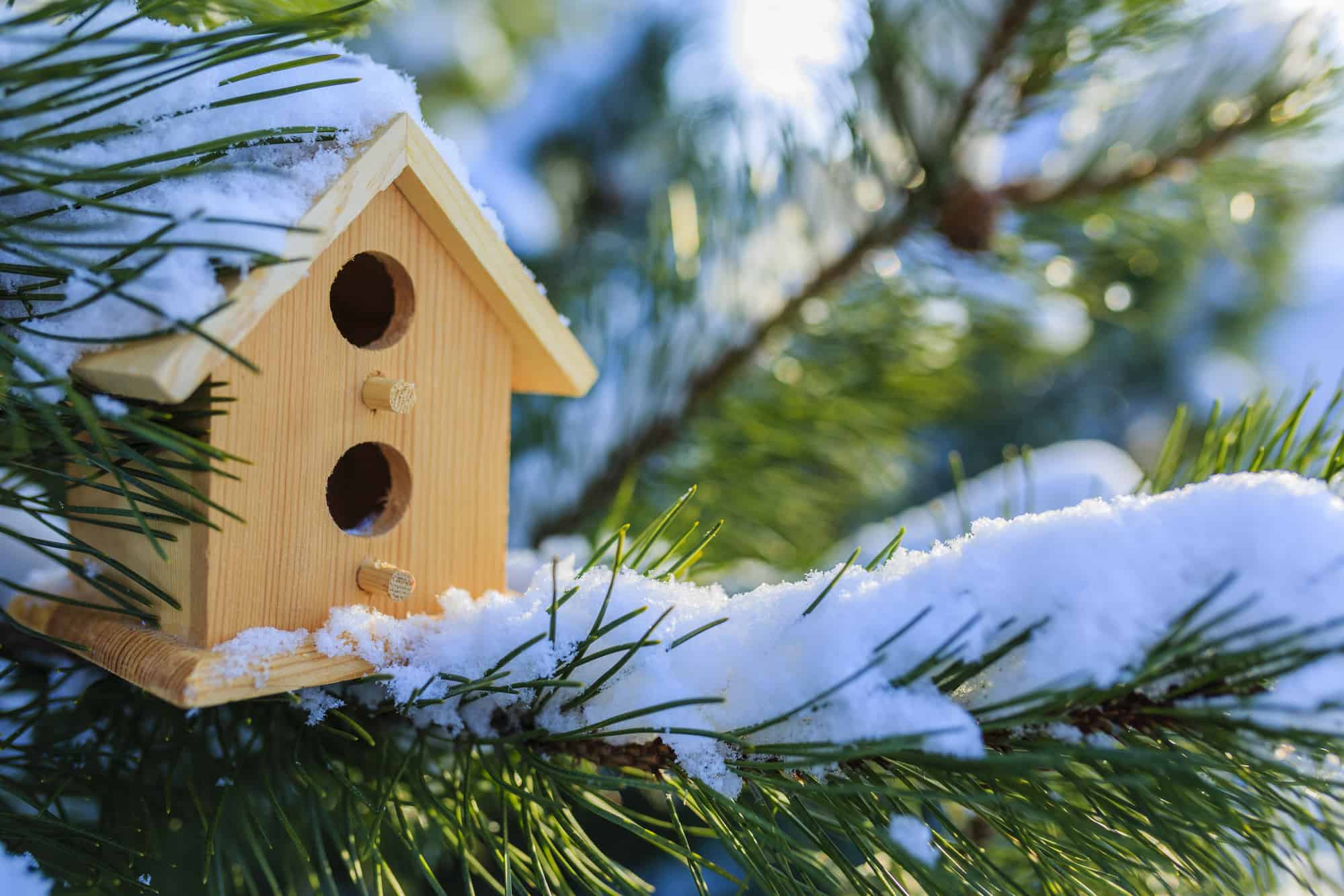
The wrong size bird feeder isn’t just inconvenient. Some birds literally can’t use certain feeders because of their weight or their feeding habits, leaving you with a potential waste of a purchase.
Let’s take a look at the most common feeders and the types of birds that like to use them.
Small Birds Often Use Sock (Or Nyjer) Feeders
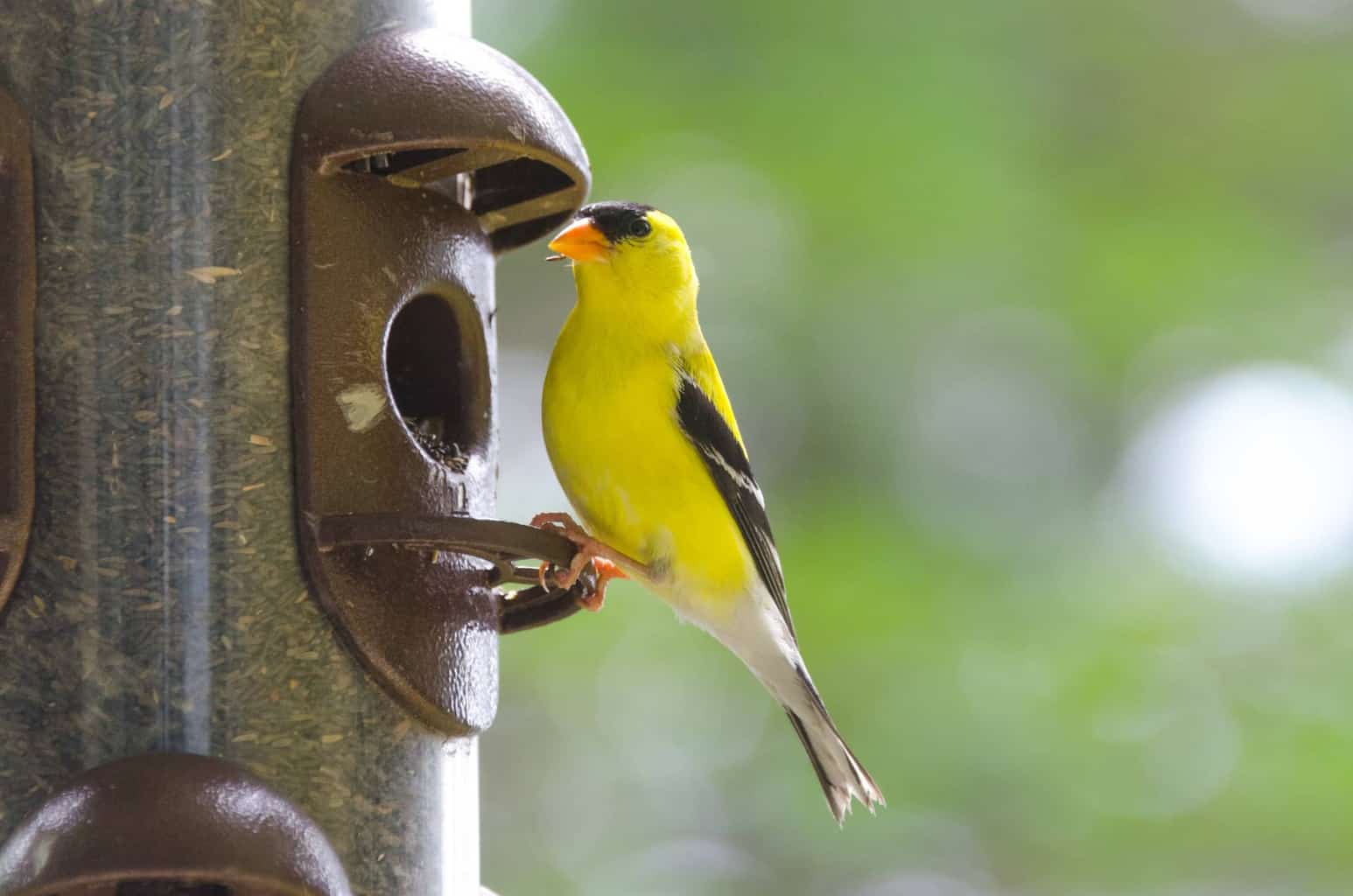
Are you thinking of attracting tiny songbirds to your backyard? You’ll do well to get a sock feeder (also known as a nyjer feeder).
With the appearance of a long, loose sock, these handy feeders make it easy for lightweight birds to perch and dig in. These feeders are especially useful at keeping squirrels at bay since they’re small and don’t support their weight well.
Some of the most beloved small birds in the American birdwatching community are:
- American goldfinch
- Lesser goldfinch
- Tufted titmouse
- Pine siskin
- Cassin’s finch
Small Birds Are Also Very Fond of Tube Feeders

These feeders seem similar to sock feeders since they’re long, thin, and attract small birds. However, they’re often made of plastic or glass and come with little feeding ports instead.
Unlike a sock feeder which literally looks like an oversized mesh sock, these feeders can be used in a variety of ways. Some birds like to perch on the little feeding ports and eat directly, while others will hang upside down from the top of the feeder.
Large bird species can’t eat from tube feeders, so you won’t have to worry about bully birds scaring off your favorite visitors!
A few birds that love to visit tube feeders include:
- House finch
- Tufted titmouse
- House sparrow
- Red-bellied woodpecker
- Red-winged blackbird
Small to Medium Birds Frequently Use Hopper Feeders
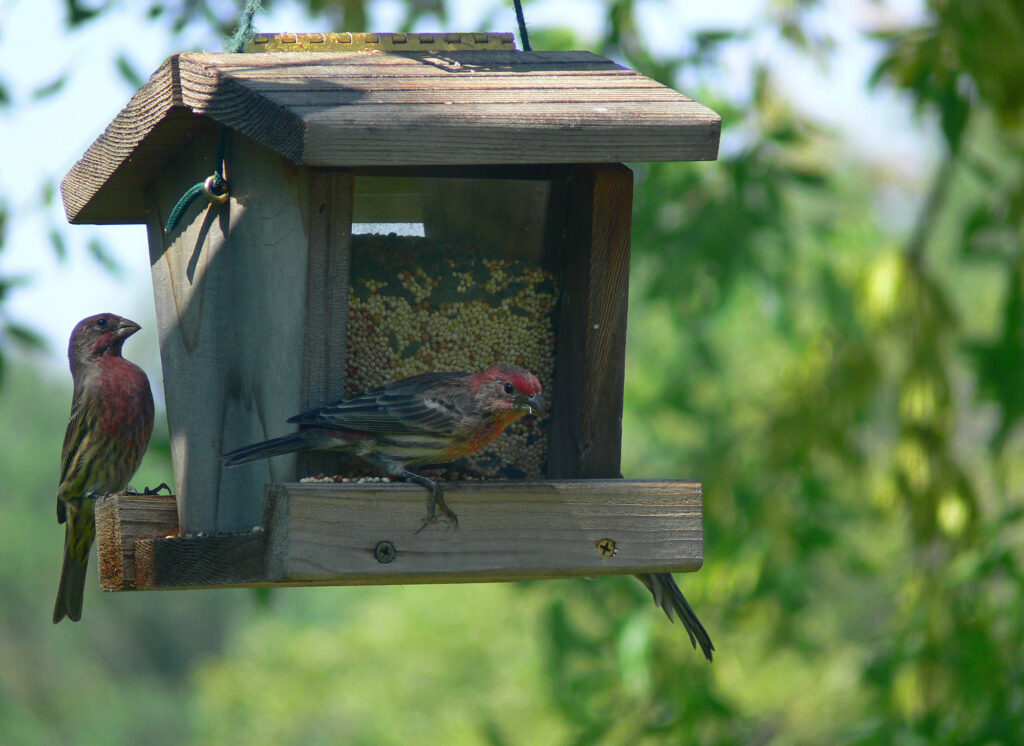
Also known as a house feeder, hopper feeders have a quaint design that’s quite attractive to both small and medium-sized birds. Small to medium-sized birds have room to ‘hop’ around and enjoy some birdfeed at their leisure.
Some small to medium-sized birds you may find at these feeders include:
- White-breasted nuthatch
- Black-capped chickadee
- House sparrow
- Rose-breasted grosbeak
- Blue grosbeak
Medium-Sized Birds Prefer Platform Feeders
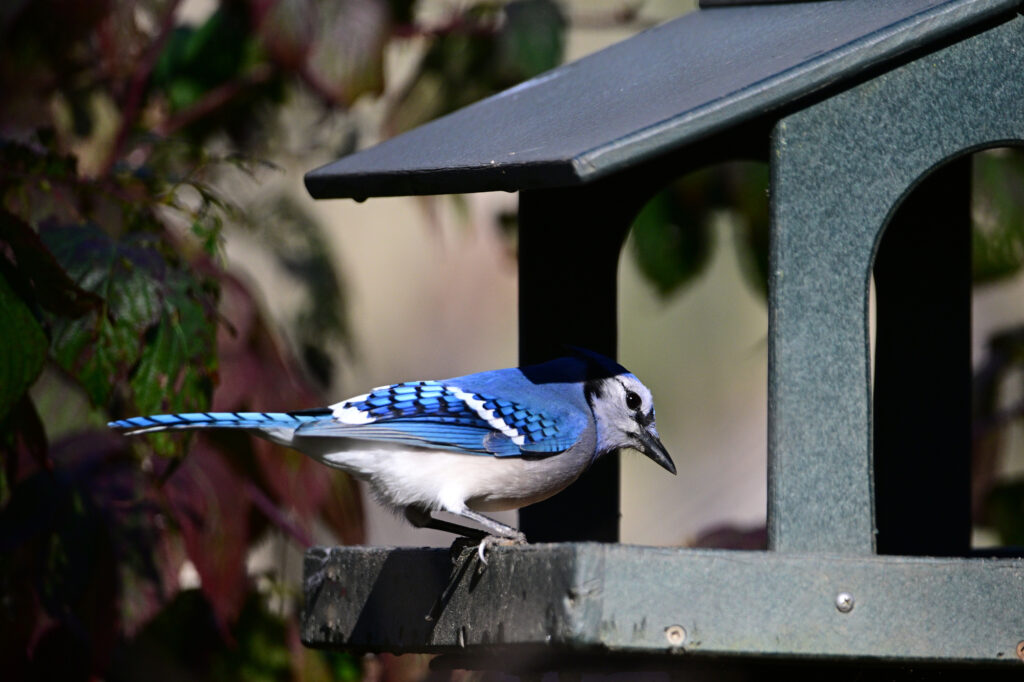
Some birds are a little too large to perch on a feeder, making feeding uncomfortable or even impossible. Platform feeders (also known as tray feeders) live up to their name by giving them a large space to stand on without the fear of tipping over.
Some medium-sized birds you may see at a platform feeder include:
- Blue jay
- Pileated woodpecker
- Northern cardinal
Suet Feeders Are a Must Have During the Winter
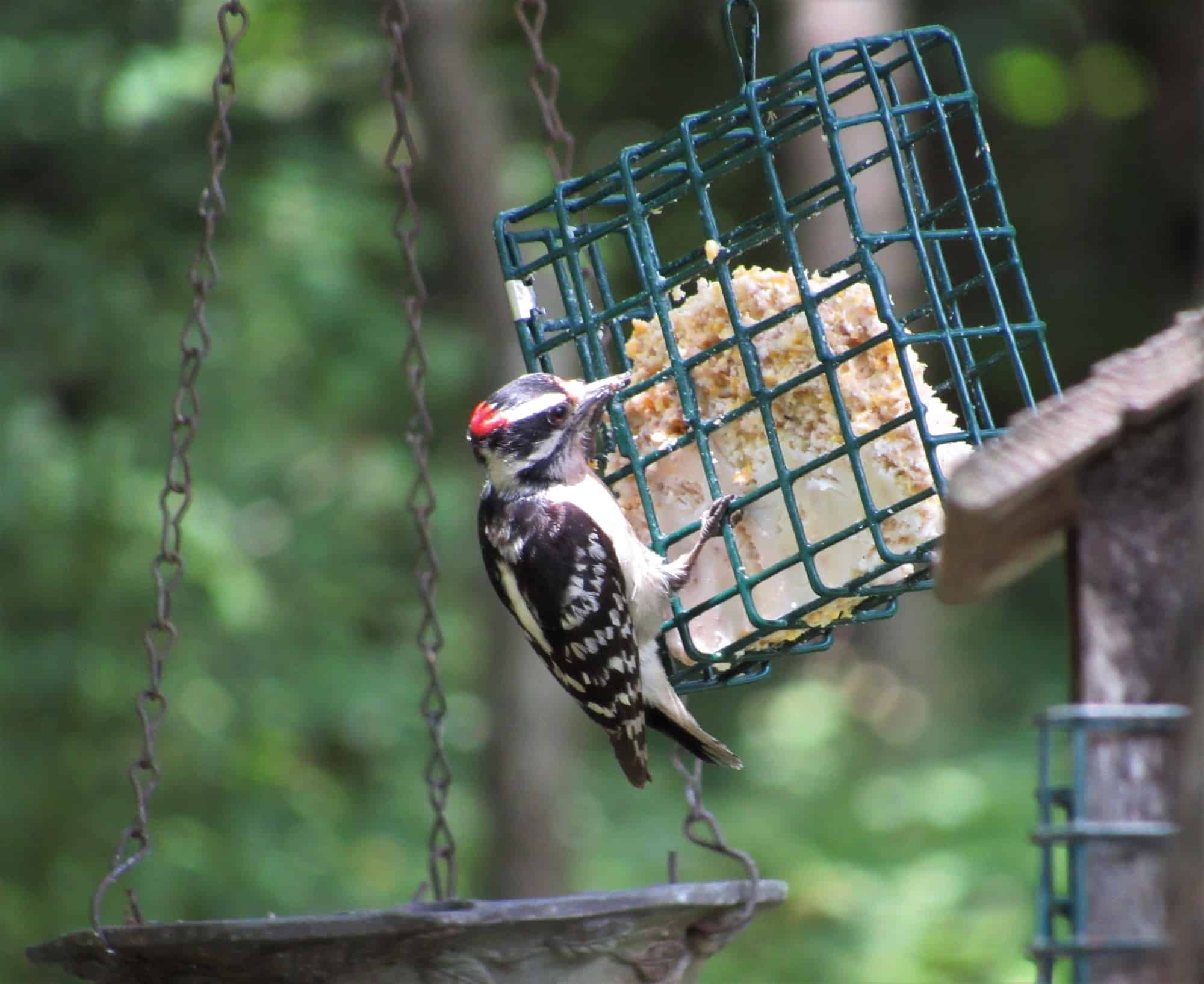
Don’t forget to keep your bird friends fed once the weather gets cold! A suet feeder gives them easy access to fat, allowing them to stock up on calories and stay warm.
A few backyard or migratory birds that love suet feeders include:
- Red-breasted nuthatch
- Stellar’s jay
- Yellow warbler
- Tufted titmice
- Pileated woodpecker
Choosing Low-Quality Materials That Don’t Hold Up Well
Low-quality materials is a pretty broad term, so let’s narrow things down a little. I consider anything low-quality that easily breaks or has a high risk of attracting multiple outdoor hazards.
For example, a bird feeder that easily builds rust or quickly becomes moldy is of lower quality than a bird feeder that resists these hazards better. To help you figure out which materials will give you the full range of benefits, I have a brief breakdown below.
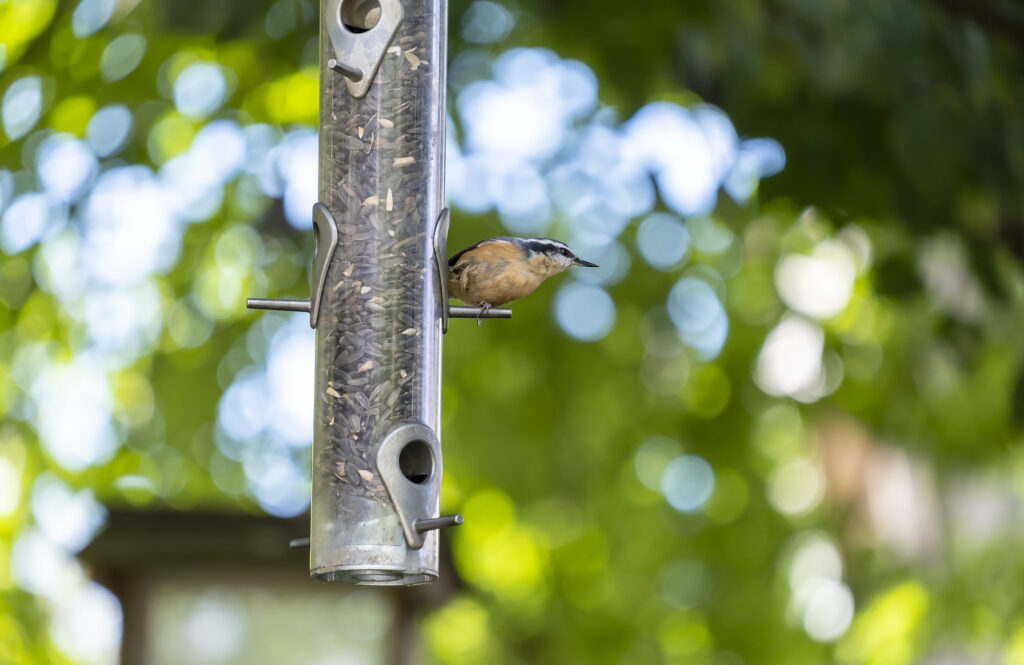
Affordable Plastic Feeders Are Fine in the Short-Term
Many affordable bird feeders are made of plastic, which is a well-rounded material that holds up well to most outdoor hazards. You won’t have to worry about mold, rust, or corrosion.
However, if you live in a very hot area, plastic will immediately show its limits. Thin plastic can outright melt in the heat, while thicker plastic may still grow wrinkled and warped over time.
If you’re just starting out and don’t want to spend too much, there’s nothing wrong with an affordable plastic bird feeder. If you want a feeder for the long haul, consider one of the other options on the list.
Always Make Sure You Know the Metal You’re Buying
Metal is another material you’ll frequently encounter, particularly in suet and hopper feeders with metal mesh. This tough material is impossible for pesky squirrels to chew through and is too hardy to melt in the sun like plastic.
However, I recommend looking for bird feeder brands that specify what kind of metal they’re using. For example, stainless steel is a common material found in everyday applications like silverware or furniture.
It makes for a pretty good bird feeder material since it’s resistant to scratches, dents, and melting. That said, it tends to rust when exposed to water or humid weather without regular wipe-down sessions.
Aluminum won’t rust, but it often corrodes and is easy to dent. When you know exactly what kind of metal you’re using, you’ll be better prepared to take good care of it.
Gray Bunny offers a copper-based tube feeder, a solid material that reduces its risk of corrosion from water exposure.
- {NEW 2024 BIRD FEEDER} Enhanced with a lockable lid to deter squirrels, allowing peaceful feeding for small wild birds. This...
- {HAND-BRUSHED BEAUTY} This brushed copper bird feeder exudes elegance, meticulously hand-brushed for a stunning finish. Designed...
- {GREAT BIRD LOVER GIFTS} This bird feeder features six ports with perches, enabling multiple birds to feed at once. It's perfect...
Last update on 2024-07-26 / Affiliate links / Images from Amazon Product Advertising API
Wood is Pretty, but Is Prone to Mold and Infestations

You may be tempted to purchase a rustic, wooden bird feeder to match your wooden outdoor furniture, but beware! This material is one of the most finicky and requires a lot of upkeep.
On the plus side, wood is very eco-friendly and can easily be recycled. On the downside, it’s prone to developing mold and mildew when exposed to moisture.
Removing a little mold from wood is possible, but a lot of mold will require you to replace your feeder outright. To prevent this, I recommend taking wooden feeders down during rainy periods and checking them for possible mold growth every week.
Insects like ants and termites also enjoy burrowing into wooden bird feeders. This is one purchase you’ll have to regularly double-check to ensure it’s still safe for birds to use.
If you want a slightly more hands-off bird feeder (slightly being the keyword), metal or plastic is a better choice.
Glass Is Another Solid Option (Just Don’t Drop It)
If you want a bird feeder that requires less upkeep than wood or stainless steel, glass may be your new favorite material. A glass feeder won’t rust, corrode, develop mold, or attract pests – there’s just one issue!
Glass is extremely fragile, so you’ll have to secure it extra carefully to a perch or thick tree branches to keep it from falling. It’ll likely be fine if it falls onto a grass patch, but it’s guaranteed to shatter if it hits wood panels or cement.
REALEAD’s elegant glass and metal bird feeder is one option you can consider. Its hopper-style design is well-suited to small and medium birds, not to mention it’ll be easy to clean.
- 【Stylish Metal Construction】Our metal bird feeders are not only functional but also serve as a stunning garden accessory,...
- 【Durable Glass Design】Made with high-quality glass, this outdoor bird feeders are designed to withstand extreme weather...
- 【Humanized Design】Wide 8 inches roof to shade birds from the sun and rain. These drain holes on the tray will prevent water...
Last update on 2024-07-26 / Affiliate links / Images from Amazon Product Advertising API
Forgetting To Take Into Account the Bird Feeder Placement
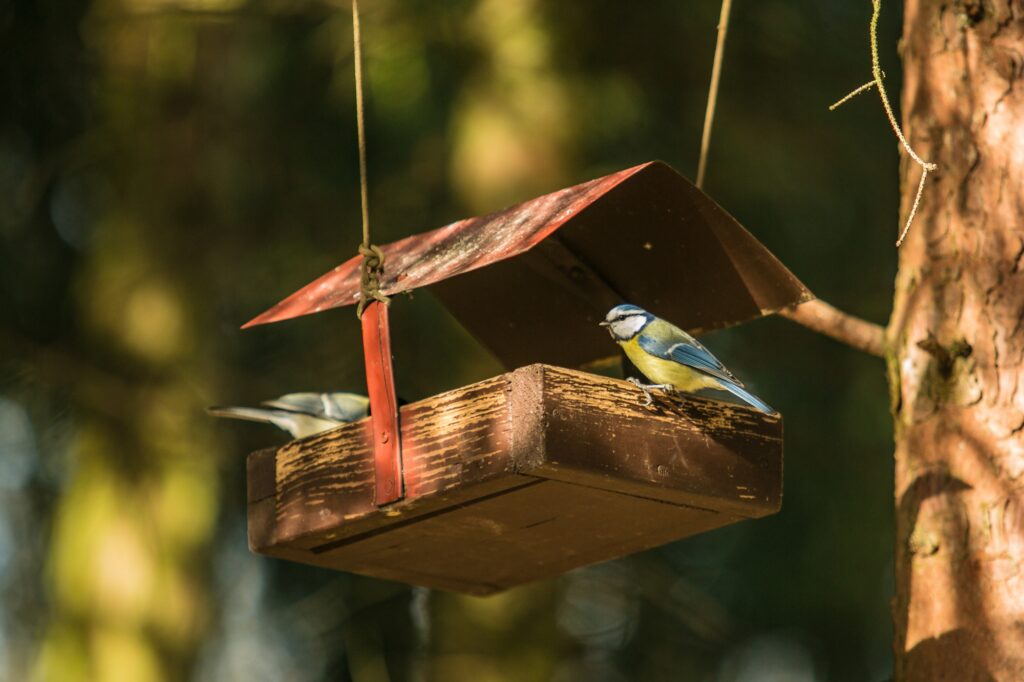
One of the biggest rookie birder mistakes is not being strategic about bird feeder placement. Not only do you need to consider how birds will reach your feeder, but you also need a convenient location to clean it weekly.
Below is a breakdown of how to properly place your bird feeder (which will affect which type you buy, too!).
Choose an Area Where You’ll Have Easy Access
Why put your bird feeder somewhere hard for you to reach? Since you need to regularly clean and stock this feeder, don’t put it far too high or in a tricky location so you can save time.
Popular locations birders like to place their feeders are:
- In an easy-to-access spot in their backyard
- Near their front porch
- Next to a patio or deck
Just make sure not to place a feeder too close to windows. Wild birds sometimes can’t see windows on clear days and injure themselves flying into them.
Be Wary of Nearby Ledges for Pesky Squirrels or Cats
If you’re going to use a hanging feeder, make sure not to place it too close to a low-hanging branch or nearby ledge. These locations are prime for pesky squirrels who want free food or cats who want to turn your feathered friends into food.
Nearby branches that are thin and lightweight are fine since heavier animals can’t perch on them. Thicker branches – at least as thick as your wrist – are a no-go, so choose another location.
The Closer to Shrubbery and Tall Tree Cover, the Better
Birds are canny creatures, quick to hide from danger or perch to get a better view of their landscape. Placing your bird feeder close to dense shrubbery and/or tall trees will help your bird friends feel more comfortable.
Consider Adding Shade To Help Birds Cool Off and Keep Feed Protected
Want your local bird population to stick around longer? Placing your feeder beneath tall tree cover or artificial shade will help them feel both protected and cool them off.
If you don’t have much cover, I recommend purchasing a sun sail or an outdoor umbrella. These often come in waterproof materials such as HDPE or nylon, able to push back water and keep mold at bay.
Overlooking Quality of Life Features That Will Save You a Headache
I can’t stress this enough: your bird feeder should be easy to use and easy to clean! Anything less and you might view your hobby as a chore.
Fortunately, bird feeder brands today work hard to pack in quality-of-life features that make birding a breeze. Let’s take a look at the most common and how they benefit both you and your birds.
Bee and Ant Guards Will Keep Your Feed Clear
If you’re worried about insects clogging up your feeder or taking food, look for a bird feeder with an ant guard or bee guard. Sometimes called ‘moats’, these little cages make it difficult for insects to wriggle inside and eat your hard-earned feed.
Easy To Fill Slot for Bird Feed Saves You Time
You shouldn’t have to dismantle your bird feeder or whip out a manual just to refill it with fresh food. Many brands have easy flip-tops that let you flip, fill, and shut.
Weight Activated Squirrel Proof Features To Reduce Wasted Money
Squirrels love an easy meal, so consider getting a feeder that automatically shuts its feeding ports if anything heavier than a bird lands on it. It’s a simple addition that saves you a lot of money!
If you need a place to start, ABXKZ’s beginner bird feeder has squirrel-proof features as well as a large-capacity seed holder. However, they don’t specify what type of metal they use, so keep that in mind!
- Squirrel Proof Bird Feeder for Outside: The all-metal squirrel proof bird feeder’s weight-activated perch, which is calibrated...
- Metal Wild Bird Feeders: The bird feeders for outside is made of all metal, chew proof. The top cover of the house bird feeder is...
- Large Capacity Bird Feeder: The large bird feeder can load up to 5 pounds of black-oil sunflower seed, mixed seed, hulled...
Last update on 2024-07-26 / Affiliate links / Images from Amazon Product Advertising API
Not Reading Verified User Reviews Before Purchasing
Now that you know about high-quality bird feeder materials and which feeder suits your favorite birds best, it’s time to buy. …Just kidding, it’s time to read verified user reviews!
As a writer and a marketer, I’m well aware that there’s only so much a product description or advertisement can tell you. Reading the verified user reviews of people who have bought a product will clue you into extra details you may not know about.
Make sure these reviews come from real accounts. An account is more likely to come from a real person with features such as:
- Having an icon with a photo
- Leaving several reviews in the past
- Getting specific with their feedback (no weird buzzwords or spamming keywords)
Forgetting To Add a Clean and Comfortable Bird Bath
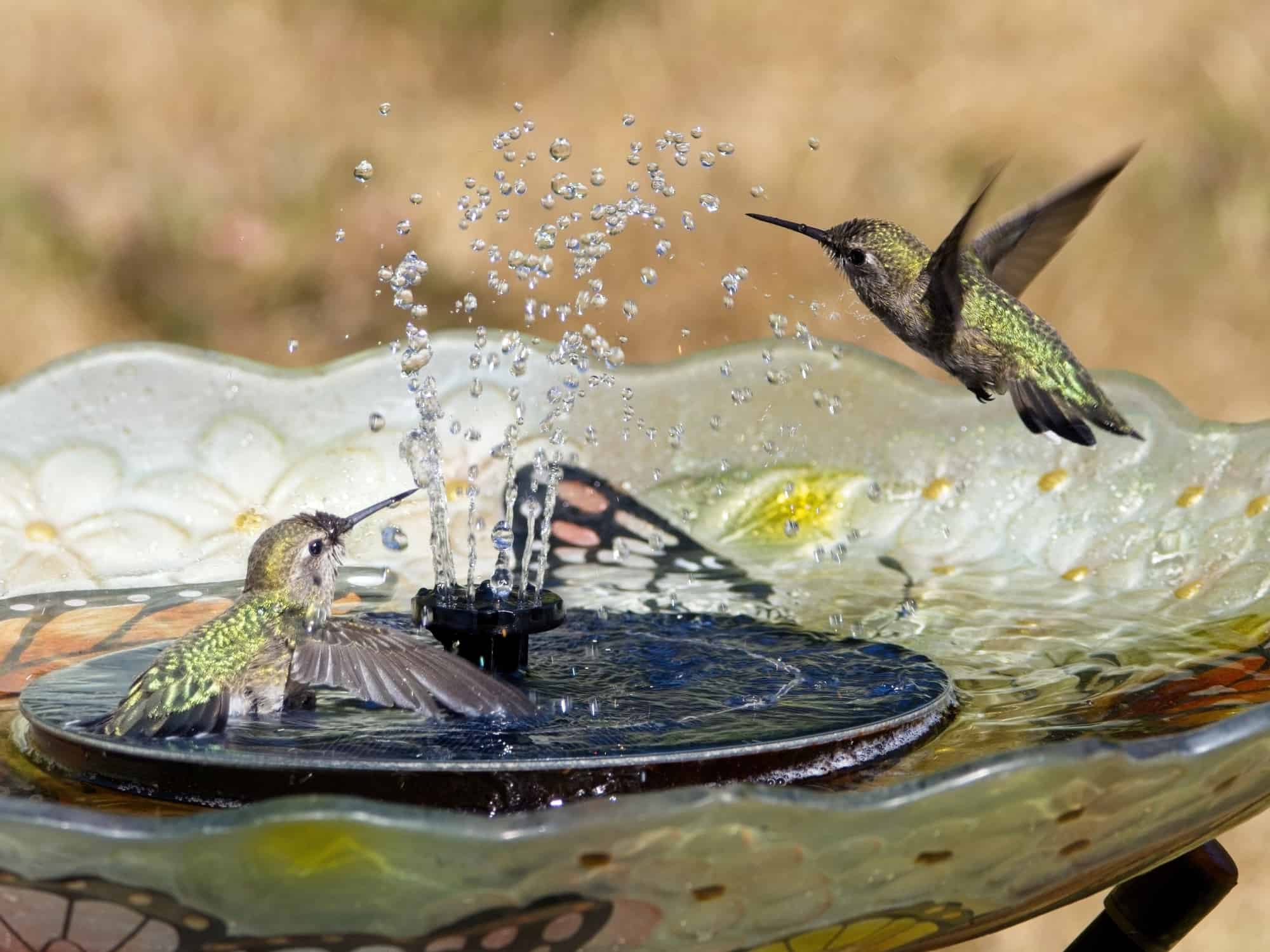
Diversity of birds means a diversity of tools to attract them! I highly recommend supplementing your bird feeder and giving your backyard birds a bird bath.
Your outdoor space does a better job of simulating a bird’s natural environment when it has food and water. Also, a bird who’s not hungry at the moment may still want to linger for a quick dip.
Choosing the Most Compatible Bird Feeder Is a Worthwhile Journey
Choosing the best feeder for your needs is a journey, but you don’t have to take it alone. We at WildBirdScoop are happy to help you avoid common pitfalls and make sure you – and your birds! – are getting a great experience.
Picking the wrong feeder is not just a waste of money. You could end up with a mess if your wooden feeder grows mold or if a squirrel chews through cheap materials.
After you find a high-quality feeder with handy quality-of-life features, you also need to place it properly. Failing to put it somewhere shaded and safe could expose your bird activity to cats or drive them away entirely.
Want to learn more about the delicate, yet rewarding art of birdwatching? Check out the following articles:

